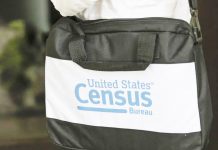

The United States was significantly more racially diverse in 2020 than it was in 2010, with the number of white people declining, as that of minorities rose to historic highs, according to the U.S. Census Bureau.
“The U.S. population is much more multiracial and much more racially and ethnically diverse than what we have measured in the past,” said Nicholas Jones, the director and senior advisor on race and ethnicity research and outreach in the Census Bureau’s Population Division.
No single piece of census data shows the direction the United State is heading in terms of racial transformation than a look at the ethnic makeup of those aged 18 and under. Of that age group, the results showed that no single race dominates, as the number of non-Hispanic whites in that category fell to 47.3% from 53.5% ten years ago.
And for the first time in the history of the census, the population of non-Hispanic white people declined, as Asians and Hispanics showed significant growth in their populations over the past decade, the 2020 census data shows.
The census results come at a time when race and ethnicity are dominant and divisive factors in the United States. Since the election of Barack Obama, the son of a Kenyan father, as the first non-white president of the United States, the country has seen an awakening of white nationalist groups acting on fears that diversity would lead to white people losing their status as the majority. Those divisions were amplified during the 2016 presidential election campaign when Donald Trump, the Republican nominee, preyed on the fears of white people and ran an openly racist campaign that propelled him to the White House.
The latest census data is likely to spark an intense debate and deepen racial division in a country where issues of race, voting rights, civil rights, and immigration have once again taken center stage in the political process.

The information the Census Bureau released was not surprising. Much of it has been documented through the American Community Survey, a sort of mini count that the Census Bureau conducts every year by analyzing data. But the 2020 census data is comprehensive and presents a more precise and vivid picture of the changes that have happened since 2010, and gives a more predictable indication of what the country will look like in the years to come.
The overall U.S. population is now over 330 million people, up from 309 million in 2010, according to the new census data. Latinos accounted for the largest increase, as their population rose by almost a quarter since the 2010 census. There are now 62.1 million people of the Latin descent in the United States, or 18.7 percent of the total population, according to the data. The population of Asians soared to 24 million people, an increase of nearly a third.
The 2020 census results also showed the United States as an aging nation with falling birth rates. People over the age of 18 made up over 75% of the population, which was more than 10% higher than 2010. The population of those under 18, on the other hand, declined by 1.1 million to 74.2 million children.
Census officials cautioned, however, that the drop in the population of non-Hispanic whites might not be entirely due to falling birth rates but also because of changes in the way people identified themselves in the 2020 census questionnaire.
“To frame the discussion of racial composition, we use the concept of race alone, race in combination, and race alone or in combination,” said Jones, the advisor on race and ethnicity.
Jones said the number of people who identified as multiracial accounted for 10% of the total U.S. population. In the past decade, their number rose exponentially from 9 million to 33.8 million. A majority of them, 19.3 million, identified as “white and some other race”, Jones said.
Another reason to be cautious, Jones said, was because the number of people of Latino origin who identified as white alone decreased by 52.9%, down from 26.7 million to 12.6 million.
The Census Bureau did not include information about how the population of immigrants has changed of the last decade because what was released this week was only partial data intended to help state governments with redrawing congressional district boundaries, officials said.
About Edwin Okong'o - Mshale Contributing Editor
Edwin Okong'o is a Mshale Contributing Editor. Formerly he was the newspaper's editor.





